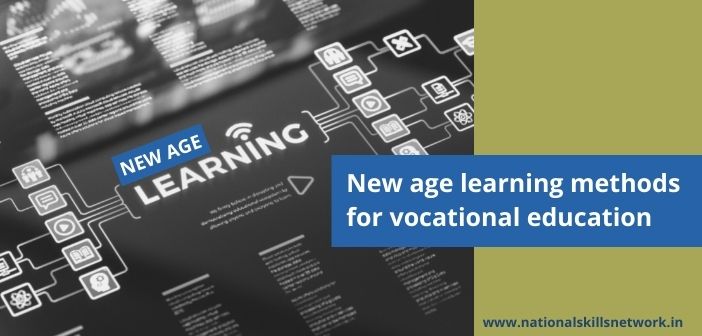Guest Author: Suma Nair, Lead, Products, TCS iON Vocational Education, Tata Consultancy Services

Vocational education works at the intersection of occupational experience, and technical and academic competencies, this calls for cognitive and kinesthetic involvement of the learners to achieve the desired learning outcomes. The overarching emphasis is on the practical component that demands an interactive and immersive learning environment, a phygital model blended with the right mix of pedagogical strategies can deliver excellence.
So, how do we design a vocational program using sound pedagogic principles for phygital delivery? How do we cater to different learning styles such as visual, auditory and kinesthetic to provide an immersive learning experience? When the live lecture is still the most popular way of teaching in the classroom, how does one go beyond the classroom and explore a blended format or flip classroom for keeping the learners engaged?
In more ways than one, COVID-19, with the acceleration of technology adoption in the vocational space, has provided answers to the above questions. For example, many teachers and trainers who were skeptical about the effectiveness of technology-based simulation environment in the vocational segment, are now convinced that simulations are effective in imparting skills. Simulations create a surrogate workplace that allows trainees to undertake activities or procedural tasks within a safe environment without dangerous implications and learn from errors. However, it is not capable of re-creating real life situations and the challenges that come with it.
For students, a phygital learning environment caters to different learning styles that involve:
- Exploring things, by fixing and assembling them
- Observing how the instructor accomplishes a task
- Using their hands and feet to operate gadgets in a physical environment
- Questioning how things work, rather than reading about it
- Following instructions to complete a practical task
- Experience the real-life settings and challenges and discover the ways of handling it
Simulations, help educators deliver learning faster and in an engaging way. When offered through a phygital model, vocational programs need a strategic mix of many pedagogic strategies to make the transfer of knowledge faster with high level of learner engagement; let’s explore a few of them:
 Game-based and gamified learning
Game-based and gamified learning
As a design strategy, gamified learning provides high level of learner engagement. Used creatively, gamified learning can be used for delivering all level of cognitive and thinking skills across industries such as automotive, logistics, aerospace, hospitality and others.
For example, a puzzle on assembling a car engine can be a creative and engaging alternative to watching a video on the same.
In terms of positive reinforcement of learning, there is scope for providing feedback and suggest corrective measures along with the reasoning behind the feedback.
Project-based, guided learning
Employers today are emphasizing problem-solving skills. Project-based; guided learning is an effective way of imparting skills with a problem-solving approach. This not only boosts their confidence it also provides an opportunity to explore, discover and learn. Let’s assume that in a typical face-to-face class in Digital Manufacturing the facilitator assigns various projects either as individual or group work to the students. If the projects encourage the students to explore the subject further and practice on CNC Machine by solving the problems identified in the project, they not only enjoy the learning process but also get a chance to apply the theory acquired from the lecture.
When implemented through internships, project-based learning provides the advantage of mentoring by industry experts and access to the real workplace.
Quiz and tests for continuous feedback
A judicious mix of formative assessments is also one of the most important adult learning principles that help adults gain confidence as they go through the learning process.
Through phygital model, we can ensure that the learners have access to the best of both – the instructors and experts who can mentor and guide them and a sound and learner-friendly online environment for exploring, learning, making mistakes and re-learning – all at their convenience. Today, with the massive adoption of online learning in the vocational and skilling interventions, there is a chance that we miss out on providing a balanced learning environment.
While a phygital model works best when supported by sound pedagogic strategies, we also need to explore ways to enhance the learning experience and outcomes. It’s here that TCS iON brings in the best from their partners, striving towards excellence. In case you wish to learn more about the phygital model from TCS iON, write to us at contact@nationalskillsnetwork.com.
Click here to know more about programs offered by TCS iON in technical and vocational education – https://learning.tcsionhub.in/hub/ve/
For more information about TCS iON phygital model for vocational education, please email at tcsion.ve@tcs.com
Subscribe to our YouTube channel for more updates:
Subscribe on YouTube




